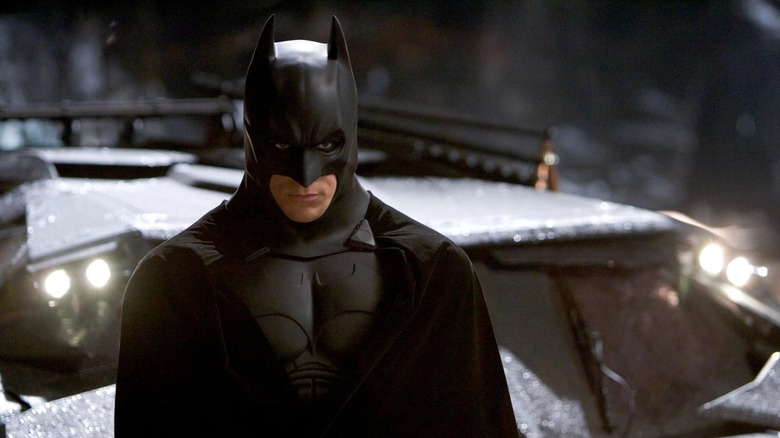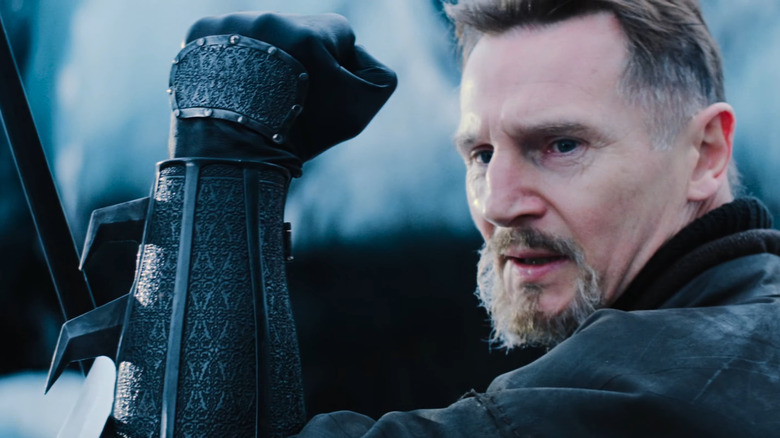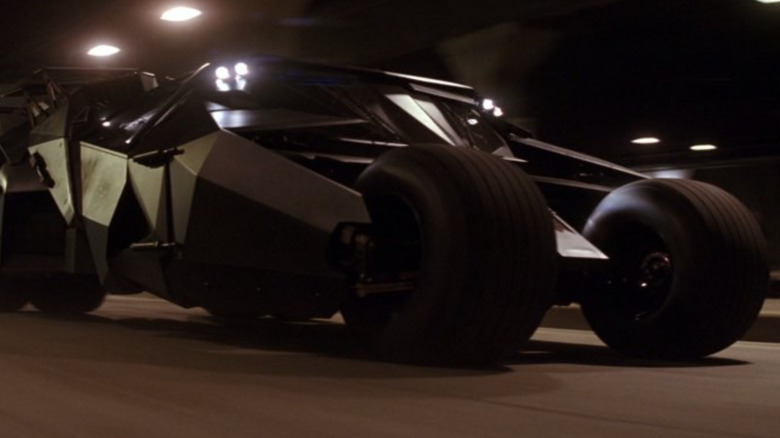Christopher Nolan Insisted On Complete Control Over The Action Scenes In Batman Begins
It may be hard to imagine now, but when Christopher Nolan first signed on to reinvent Batman for the big screen, he wasn't exactly known for his eye for action. Before the twisty and imaginative action in 2010's "Inception" or the sometimes confusing reverse action in "Tenet," Nolan had only been known for two smaller-scale films. "Memento" and "Insomnia" had their own style that didn't scream superhero blockbuster material. Still, the two films were enough to get Nolan the job of adapting one of the most popular superheroes of all time.
As this was Nolan's first big blockbuster, there was apprehension within the studio about only having a single unit of production overseen by the director, meaning all the action in the film would also be his responsibility. After all, having a second unit managing some action sequences isn't uncommon. One of the more well-known examples is Chad Stahelski and David Leitch, who worked as second-unit directors on "Captain America: Civil War." Directors Joe and Anthony Russo (via Collider) have said that their second unit was there because they "cared so much about [...] the quality of the action." However, in the case of "Batman Begins," Chris Nolan had no qualms about taking complete control of the action scenes in the film.
'Everything is equally weighted'
In Empire's comprehensive piece on the making of "The Dark Knight Trilogy," one section about the production of "Batman Begins" pointed out an interesting detail regarding Nolan's stance on a second unit. The director seemed incredulous at the thought of handing the reigns over to someone else for a film primarily centered around action: "Why would I want to direct an action film where I hire another director to direct the action?"
"Batman Begins" wasn't the first nor last time Nolan would refuse to have a second unit director. Everything that needed to be filmed would be done under his watch — no matter what purpose it served in the context of the film, it was Nolan who would oversee every aspect of production. Even later on in the director's career, in a 2012 interview with the Directors Guild of America, Nolan was asked why he doesn't use a second unit:
"Let me put it this way: If I don't need to be directing the shots that go in the movie, why do I need to be there at all? The screen is the same size for every shot. The little shot of, say, a watch on someone's wrist will occupy the same screen size as the shot of a thousand people running down the street. Everything is equally weighted and needs to be considered with equal care; I really do believe that."
"Batman Begins" is the perfect example of the "equal care" that Nolan puts into every scene of one of his films. Look no further than the big chase scene in the film involving the tumbler.
Defining what a director does
In a race to save Rachel (Katie Holmes) from Scarecrow's fear toxin, Batman takes her in the tumbler to the bat cave for the antidote as he's pursued by police in a thrilling chase sequence. The tumbler's drive through rooftops and highways is a highlight of the film and one of the few chances Batman can genuinely use this iteration of the batmobile in the trilogy. In one of many examples of miniatures used in the movie, Nolan expertly choreographs and puts on display the tumbler's power while also adding emotional stakes to keep the action from being completely mindless.
So, do Nolan's ethics in avoiding second units for action make him a better director than others who use them? Not necessarily. While Nolan himself would prefer not to, in the same 2012 DGA interview, he acknowledged that other directors use such methods successfully. For him, it was more about giving his action a distinct personality consistent with the rest of the film:
"There are fantastic filmmakers who use second and third units successfully. So it all comes back to the question of defining what a director does. Each of us works in different ways. It's really helped me keep more of my personality in these big films. There's a danger with big-action fare that the presence of the filmmaker is watered down; it can become very neutral, so I've tried to keep my point of view in every aspect of these films."
Overall, Nolan is a director whose methods are a big reason why his filmography stands out. The care he puts into every single frame speaks volumes, not just to his dedication to the medium but also to his respect for whatever story he brings to life.


